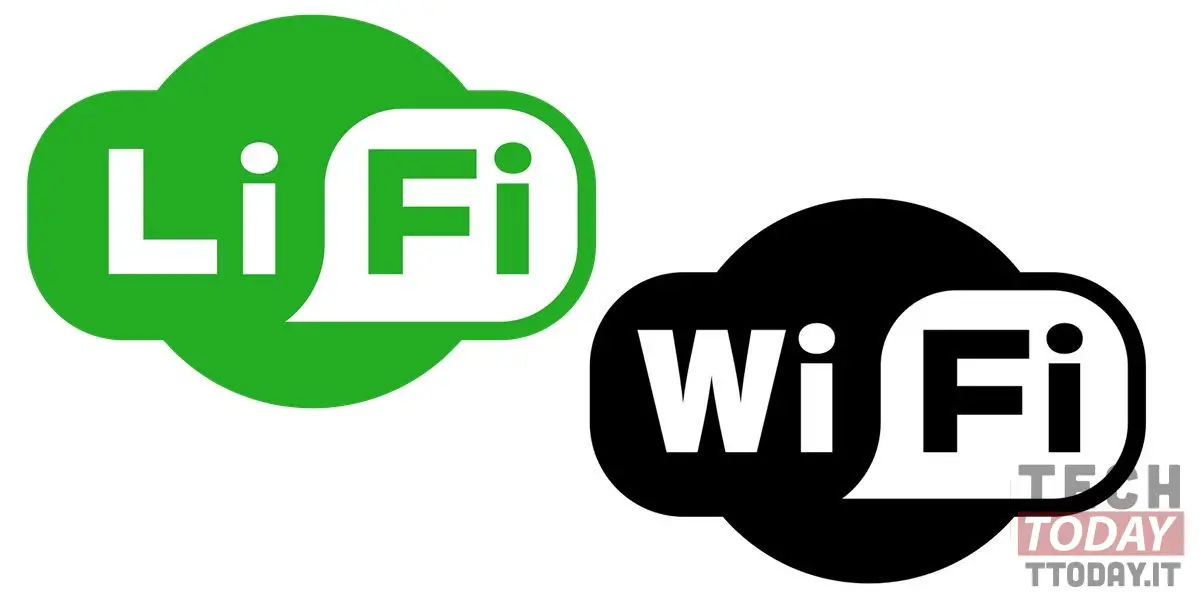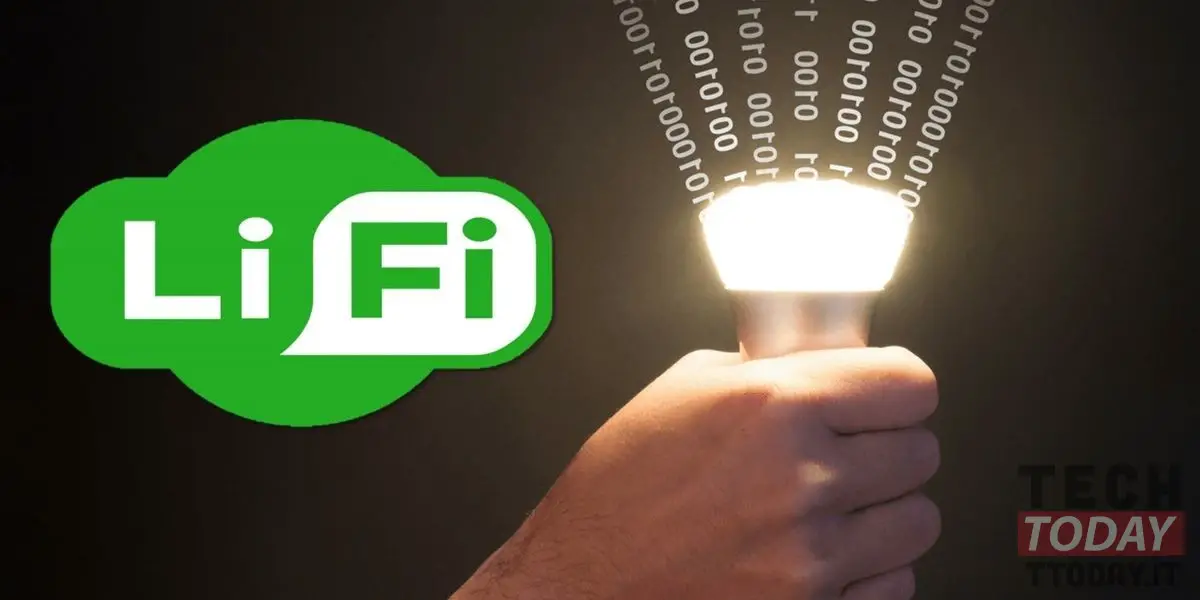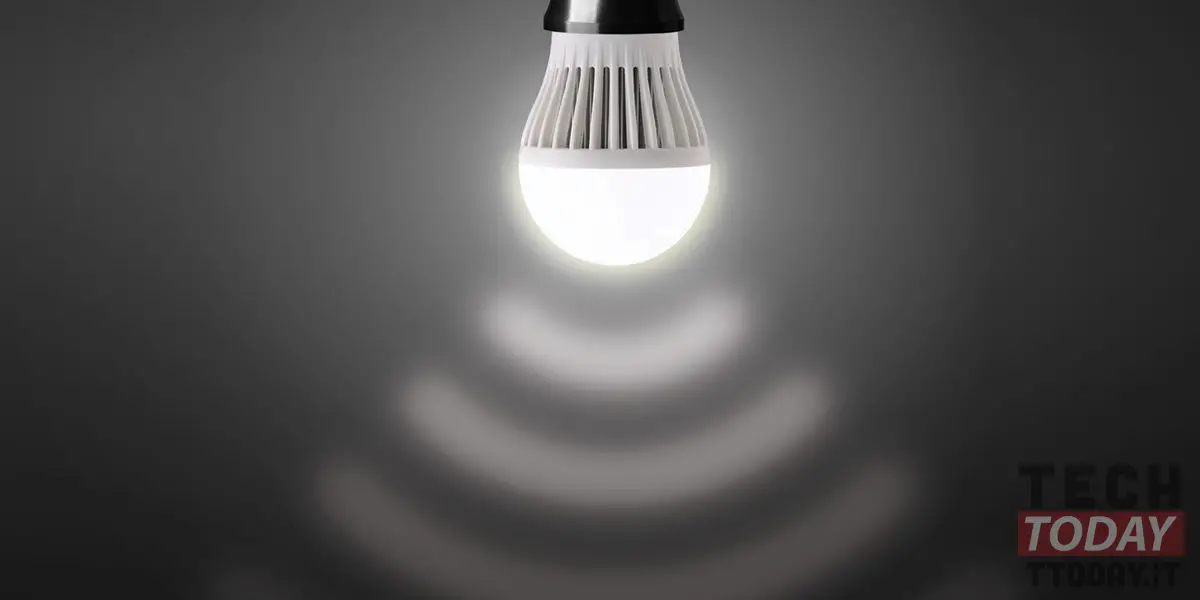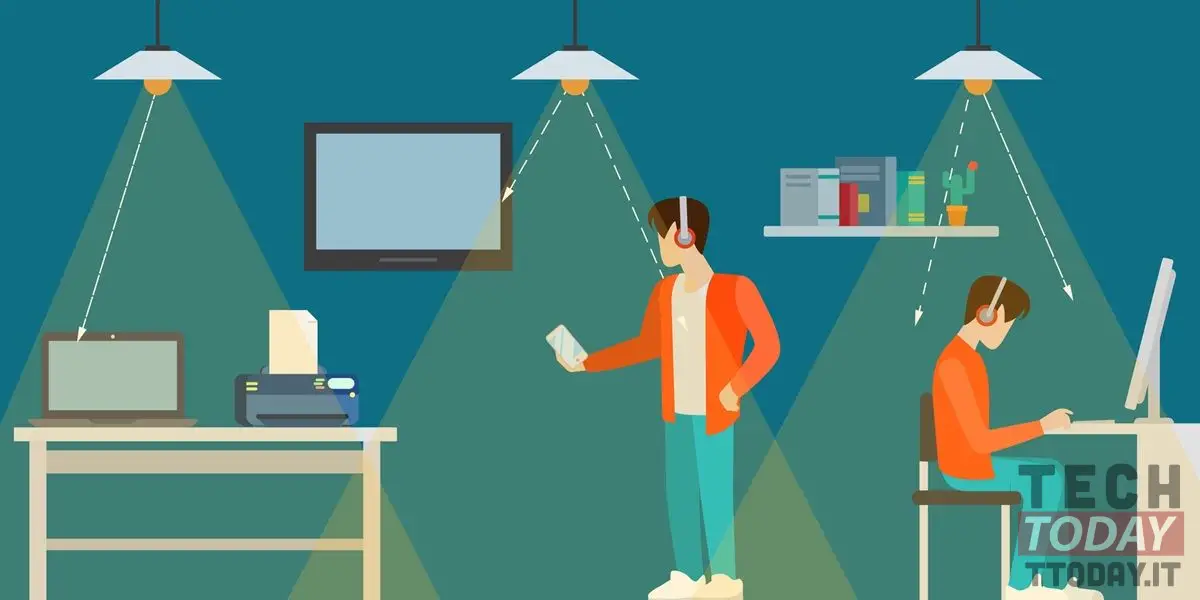
We all know WiFi technology, indeed we cannot really do without it considering the many advantages it brings, but 23 years ago, when WiFi technology first appeared, many did not believe in the project and never would have thought that nowadays WiFi is an integral part of many devices, such as TVs, refrigerators, vacuum cleaners and even in smart locks.
WiFi is therefore something that we could define as almost irreplaceable and indispensable, yet a new technology called LiFi could threaten WiFi and why we will tell you in the following lines. First of all, let's get acquainted: LiFi was created by Harald Haas, a prestigious expert in modern smartphones, about ten years ago and consists of a technology that uses visible, ultraviolet and infrared light as a wireless connection system to transmit data. You may wonder how it is possible, yet it is, using LED bulbs similar to those used in your homes, but with an emission frequency speed imperceptible to humans, equal to about 10000 million times per second.

The rapid on and off sequence of these bulbs generates a binary language that is translated by the receivers of this light, thus being able to transmit data at a speed of 40 Gbps. In experimental tests conducted at the University of Oxford, the new Li-Fi technology reached an impressive speed of 224 Gbps, a value well beyond the potential of modern Wi-Fi that reaches 10 Gbps. But is all that glitters gold? Of course we have advantages and disadvantages which I will now tell you about.

Will Li-Fi Replace Wi-Fi Technology? What is it, advantages and disadvantages
Personally I think that the current WiFi technology has improved to such an extent compared to the past that I could hardly think of a replacement, even if the advantages brought by LiFi could really make a difference, at least in certain areas of use, professional and otherwise. So the 5 advantages that LiFi offers over WiFi are as follows:
- The data transmission speed promises to be far superior to that of WiFi, with peak speeds of up to 224 Gbps. Furthermore, this speed is more stable and is not affected by distance and the presence of obstacles as in the case of WiFi;
- Its availability is higher and cheaper. This technology can be installed anywhere there is a light source. Furthermore, studies show that LiFi infrastructure can be cheaper than WiFi;
- The LiFi signal is safer and much more difficult to "steal". The wireless Internet connection offered by this technology is limited to the light beam within an enclosed space, such as inside a room;
- The connection is more stable against electromagnetic interference. This is especially important in places such as hospitals or airports where there are devices that interfere with the radio waves used by WiFi;
- The high speed of this new technology will improve the development and availability of IoT (Internet of Things) devices, improving the connectivity of all these systems.

In short, given this way the switch to the new wireless technology should happen immediately but let's also see what are the negative sides of LiFi and why, as happened with other revolutionary technologies, it is not possible to consolidate in the market. So here are the 5 disadvantages of LiFi compared to WiFi:
- The operation of LiFi is limited to closed environments only, as the signal does not pass through walls. This way, you would need a special LED bulb for each room in your home;
- Li-Fi is not an outdoor technology and requires the presence of an artificial light source, which therefore limits its use in outdoor environments due to the interference generated by sunlight;
- No modern device adapts to this technology. So smartphones, tablets, notebooks and all gadgets in circulation would not work with LiFi technology as they are designed and developed for use with WiFi technology. So the whole tech sector is expected to make a radical change to the design of new devices and gadgets.
- LiFi requires a completely new infrastructure to function properly. This represents a really important investment for this technology to replace WiFi;
- One of the probable disadvantages is that household lights must be kept on 24 hours to use the LiFi signal and therefore "problems" could be created at night, although experts state that the bulbs can be adjusted to generate a light that is not visible to being. human.

As many advantages as disadvantages, such as being able to use the Internet without worrying about factors such as distance, the presence of obstacles or other radio waves that can interfere with the signal, however we cannot ignore the significant disadvantages that LiFi has today.
So in the short term I do not think that WiFi will be replaced, but it cannot be ruled out that in the very near future the two technologies will begin to coexist, on the other hand just think of the old incandescent bulbs that were in every home, yet today of there is no trace. They have been replaced by LED technology, and if LED bulbs have already managed to conquer the market, could a technology that uses this type of light not succeed?








